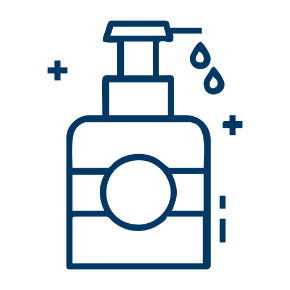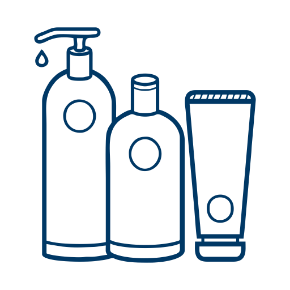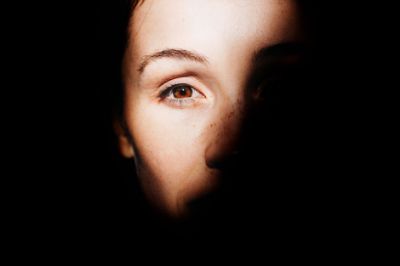If there is one part of our skin that we should take extra-special care of, it is the skin around our eyes. It is thinner and has fewer oil glands than the rest of the face, which means it shows signs of aging quicker. This thinness makes it more delicate, vulnerable and prone to allergic reactions and skin sensitivity.
Thankfully, there’s a whole category of specially formulated skincare products created to gently yet effectively treat and protect the delicate skin under and around the eyes. We break down exactly how you should be caring for this area, including tips, products and things you should never do.
- Why is it important to take care of the skin around your eyes?
Whether you’re applying concealer, using a waterproof eye makeup remover or smoothing on eye cream, it’s important to remember to handle the skin around the eyes with care. We know that this skin is extremely fragile because it’s among the thinnest on the body, but it’s also worth noting that eyes are the most mobile parts of the face. People blink an average of 10,000 times a day, which is why it’s the first area to be affected by the appearance of fine lines, also known as crow’s feet.
- What is the difference between face moisturizer and eye cream?
A few questions always come up on the topic of eye creams, such as “Do I really need an eye cream?” and “What does eye cream do?” It’s reasonable to wonder why you need a separate cream for the eye area when you already have a perfectly good moisturizer for your face.While eye creams and facial moisturizers are similar, there are some key differences to be aware of. Generally speaking, moisturizers for the face are designed to increase hydration on the skin’s surface. An eye cream, on the other hand, is specifically formulated to be used under and around the eyes, where the skin is more delicate.
For those early signs of aging—crepiness, dryness and fine lines—choose eye care products that contain hydrating ingredients and have a light consistency. Dermatologists often recommend an eye care routine that includes products with eye-specific formulas that are lighter in texture, fragrance-free, ophthalmologist tested (which means cleared for safety by an eye doctor) and packed with moisturizing ingredients because the skin in this area dries out easily, which can intensify the appearance of fine lines. These creams also focus on reducing the appearance of puffy eyes and brightening dark circles.
- How to apply eye cream?
- Don’t get confused by the name; you shouldn’t apply eye cream too close to your eyes.
- Avoid applying directly to eyelids or right next to the lash line, unless the product’s directions say otherwise.
- Using your ring finger (it has the lightest pressure), gently dab a pea-size amount of product around the orbital bone and then smooth out any excess at the temples.
- Never tug the skin; pulling will only contribute to the formation wrinkles.
If you’re using too much eye cream or perhaps not the right formula for your skin type, you could develop milia. Milia These are tiny white bumps that often form on cheeks and eyelids and under the eyes. If your eye cream is too heavy and you’re not cleansing your skin effectively, that’s when they can develop. Try swapping it for a lighter formula or an eye serum, but if the problem doesn’t go away consult a dermatologist.
- What does eye serum do?
While both creams and serums work to moisturize and care for the delicate skin around the eyes, the latter might prove to deliver the results you desire faster than your go-to cream. Like the serums you use on your face, the best eye serum can penetrate deeper into the skin and deliver a higher dose of active ingredients. Regular use of an eye serum with antioxidants can help reverse crow’s feet and protect from further damage. Eye serums also absorb more easily without leaving any residue behind, making them perfect for application under makeup during the day.
- How to remove eye makeup?
You might think you’ve already mastered this step, but did you know there’s a right way and a wrong way to remove your makeup? The worst thing you can do for your eyes on a daily basis is to rub them, so be gentle when you use makeup remover. Pulling or tugging at your under eye skin can result in damage and break delicate blood vessels, so make sure you’re not simply relying on a skin cleanser to do the job. Instead, double cleanse with a face cleanser and eye makeup remover. The makeup remover will break down any makeup, remove dirt and excess oils from the day and clean your skin. The cleanser will address your particular skin type or concern and should have ingredients to hydrate, smooth or exfoliate and treat acne.
The best eye makeup remover is one that’s tailored to your skin type. If you have reactive skin, opt for an eye makeup remover for sensitive skin or micellar water. What is micellar water? Micellar water is a multi-use cleansing product made of purified water and micelles. Think of these micelles as tiny balls of cleansing oil suspended in water which make even the toughest waterproof makeup melt cleanly off skin with zero skin irritation.







